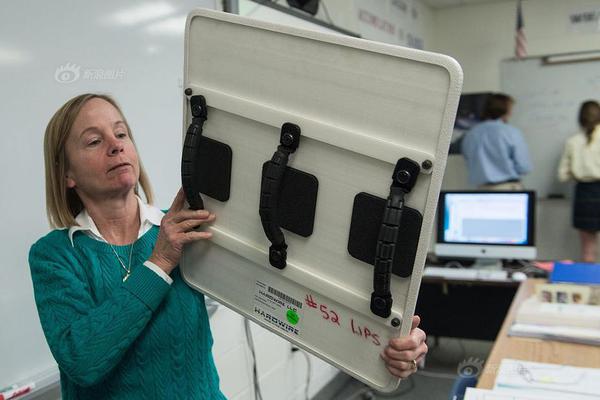
1. In the column of system type, you can clearly see whether the computer is a 32-bit or 64-bit system.
2. Select My Computer, right-click, and you can see the "Properties" option. Click Properties to see whether your computer is a 32-bit or 64-bit operating system. There are also some basic information about the computer on my attributes, such as processor, memory, etc.
3. Enter "dxdiag" in the run. If a DirectX diagnostic tool dialog box pops up, prompting us whether we want to check, click OK.
4. Check the system type of the computer under the "System Type" entry. If there is the word "x64Edition" in the system type, then the Windows system is 64-bit; if not, it must be 32-bit.
5. Method 1: First, right-click "My Computer" and select "Properties".Open the system properties box, and then select "General". If it is not clearly marked with x64, it means that the computer is 32-bit. Method 2: Click "Start" and then select "Run".
6. First of all, the first step is to find "computer" on the computer desktop. Then right-click on its "computer", and some options will appear. As shown in the picture below. Then find the "Properties" option in these options and click it to enter.
View system properties Method 1: Click the "Start" menu on the computer, find "Computer", and select and right-click "Properties" in the menu bar; Method 2: Use the shortcut key Win+Pause/Break to open the system properties page.
First, click the [Computer] icon in the upper right corner of the computer's home page. After entering the main page of the computer, click [System Attributes] at the top of the page. Finally, after entering the home page of system properties, you can see how many operating systems the system has.
Click to select the computer, right-click the mouse, and the pop-up list to select the properties. After selecting the attributes. Click to enter. After clicking on the properties, the system interface will pop up. In the system section, we can see that the computer system type is a 64-bit operating system and other relevant information.
Take the Windows 10 system as an example, the viewing method is as follows: Method 1: Right-click the "This Computer" icon on the desktop on the desktop, and select the "Properties" menu item in the pop-up menu. The system will be turned on at this time.In the property window, you can see how many bits of the system we have installed in the system type line here.
The specific operation is as follows: Click "This Computer" on the home screen of the computer, as shown in the figure: right-click the mouse button, and you can see the selection of "Properties" in the pop-up dialog box. Click to enter: you can see that the system of this computer is 64-bit, that is, 64-bit operating system.
The red box shows whether it is a 32-bit or 64-bit system. The above are several ways to check whether the computer is 32-bit or 64-bit introduced by the editor. In the column of system type, you can clearly see whether the computer is a 32-bit or 64-bit system.
If your system is 64-bit, it will be clearly marked "x64Edition" after the line "OS Name: Microsoft Windows XP Professional", otherwise your system will be 32-bit.
Check the system type of the computer under the "System Type" entry. If there is the word "x64Edition" in the system type, then the Windows system is 64-bit; if not, it must be 32-bit.
Method 1: First, right-click "My Computer" and select "Properties". Open the system properties box, and then select "General". If it is not clearly marked with x64, it means that the computer is 32-bit. Method 2: Click "Start" and then select "Run".
Check the computer configuration by entering the "dxdiag" command in the run; the specific steps are as follows: enter "dxdiag" in the run. If a DirectX diagnostic tool dialog box pops up, prompting us whether we want to check, click OK.
Today, I will introduce the specific operation steps of how to judge whether your Windows system computer is 64-bit or 32-bit. First, open the computer, select Start in the lower left corner of the desktop and click. Enter the start menu, select the gear icon on the left, and enter the settings.

UEFA live free-APP, download it now, new users will receive a novice gift pack.
1. In the column of system type, you can clearly see whether the computer is a 32-bit or 64-bit system.
2. Select My Computer, right-click, and you can see the "Properties" option. Click Properties to see whether your computer is a 32-bit or 64-bit operating system. There are also some basic information about the computer on my attributes, such as processor, memory, etc.
3. Enter "dxdiag" in the run. If a DirectX diagnostic tool dialog box pops up, prompting us whether we want to check, click OK.
4. Check the system type of the computer under the "System Type" entry. If there is the word "x64Edition" in the system type, then the Windows system is 64-bit; if not, it must be 32-bit.
5. Method 1: First, right-click "My Computer" and select "Properties".Open the system properties box, and then select "General". If it is not clearly marked with x64, it means that the computer is 32-bit. Method 2: Click "Start" and then select "Run".
6. First of all, the first step is to find "computer" on the computer desktop. Then right-click on its "computer", and some options will appear. As shown in the picture below. Then find the "Properties" option in these options and click it to enter.
View system properties Method 1: Click the "Start" menu on the computer, find "Computer", and select and right-click "Properties" in the menu bar; Method 2: Use the shortcut key Win+Pause/Break to open the system properties page.
First, click the [Computer] icon in the upper right corner of the computer's home page. After entering the main page of the computer, click [System Attributes] at the top of the page. Finally, after entering the home page of system properties, you can see how many operating systems the system has.
Click to select the computer, right-click the mouse, and the pop-up list to select the properties. After selecting the attributes. Click to enter. After clicking on the properties, the system interface will pop up. In the system section, we can see that the computer system type is a 64-bit operating system and other relevant information.
Take the Windows 10 system as an example, the viewing method is as follows: Method 1: Right-click the "This Computer" icon on the desktop on the desktop, and select the "Properties" menu item in the pop-up menu. The system will be turned on at this time.In the property window, you can see how many bits of the system we have installed in the system type line here.
The specific operation is as follows: Click "This Computer" on the home screen of the computer, as shown in the figure: right-click the mouse button, and you can see the selection of "Properties" in the pop-up dialog box. Click to enter: you can see that the system of this computer is 64-bit, that is, 64-bit operating system.
The red box shows whether it is a 32-bit or 64-bit system. The above are several ways to check whether the computer is 32-bit or 64-bit introduced by the editor. In the column of system type, you can clearly see whether the computer is a 32-bit or 64-bit system.
If your system is 64-bit, it will be clearly marked "x64Edition" after the line "OS Name: Microsoft Windows XP Professional", otherwise your system will be 32-bit.
Check the system type of the computer under the "System Type" entry. If there is the word "x64Edition" in the system type, then the Windows system is 64-bit; if not, it must be 32-bit.
Method 1: First, right-click "My Computer" and select "Properties". Open the system properties box, and then select "General". If it is not clearly marked with x64, it means that the computer is 32-bit. Method 2: Click "Start" and then select "Run".
Check the computer configuration by entering the "dxdiag" command in the run; the specific steps are as follows: enter "dxdiag" in the run. If a DirectX diagnostic tool dialog box pops up, prompting us whether we want to check, click OK.
Today, I will introduce the specific operation steps of how to judge whether your Windows system computer is 64-bit or 32-bit. First, open the computer, select Start in the lower left corner of the desktop and click. Enter the start menu, select the gear icon on the left, and enter the settings.

Free sports events uefa champions league app android
author: 2025-01-07 07:12 European Cup live
European Cup live
383.32MB
Check Walletinvestor digi plus
Walletinvestor digi plus
756.56MB
Check Hearthstone Arena Tier List
Hearthstone Arena Tier List
227.65MB
Check bingo plus update today
bingo plus update today
665.93MB
Check DigiPlus fair value
DigiPlus fair value
844.84MB
Check bingo plus update today Philippines
bingo plus update today Philippines
457.73MB
Check Hearthstone arena
Hearthstone arena
145.92MB
Check DigiPlus stock
DigiPlus stock
419.36MB
Check Walletinvestor digi plus
Walletinvestor digi plus
314.39MB
Check bingo plus update today Philippines
bingo plus update today Philippines
858.82MB
Check UEFA Europa League
UEFA Europa League
464.29MB
Check casino plus free 100
casino plus free 100
386.55MB
Check Europa League app
Europa League app
918.61MB
Check casino plus free 100
casino plus free 100
959.83MB
Check UEFA Champions League standings
UEFA Champions League standings
527.43MB
Check PAGCOR online casino free 100
PAGCOR online casino free 100
741.41MB
Check DigiPlus fair value
DigiPlus fair value
186.97MB
Check Hearthstone arena
Hearthstone arena
199.53MB
Check Europa League app
Europa League app
238.58MB
Check Walletinvestor digi plus
Walletinvestor digi plus
827.25MB
Check Hearthstone arena
Hearthstone arena
426.52MB
Check DigiPlus stock
DigiPlus stock
391.73MB
Check casino plus free 100
casino plus free 100
227.98MB
Check Free sports events uefa champions league app android
Free sports events uefa champions league app android
365.55MB
Check casino plus free 100
casino plus free 100
511.47MB
Check DigiPlus fair value
DigiPlus fair value
438.77MB
Check Arena plus APK
Arena plus APK
128.51MB
Check Arena plus APK
Arena plus APK
771.44MB
Check UEFA Champions League standings
UEFA Champions League standings
955.14MB
Check DigiPlus Philippine
DigiPlus Philippine
747.59MB
Check Casino Plus
Casino Plus
387.87MB
Check Europa League app
Europa League app
153.78MB
Check DigiPlus stock
DigiPlus stock
841.83MB
Check UEFA Champions League standings
UEFA Champions League standings
738.43MB
Check LR stock price Philippines
LR stock price Philippines
481.47MB
Check Europa League app
Europa League app
547.22MB
Check
Scan to install
UEFA live free to discover more
Netizen comments More
2372 Casino redeem
2025-01-07 07:39 recommend
498 Casino Plus
2025-01-07 06:43 recommend
1548 bingo plus update today
2025-01-07 05:53 recommend
311 UEFA European championship
2025-01-07 05:49 recommend
1261 Casino Plus app
2025-01-07 05:10 recommend